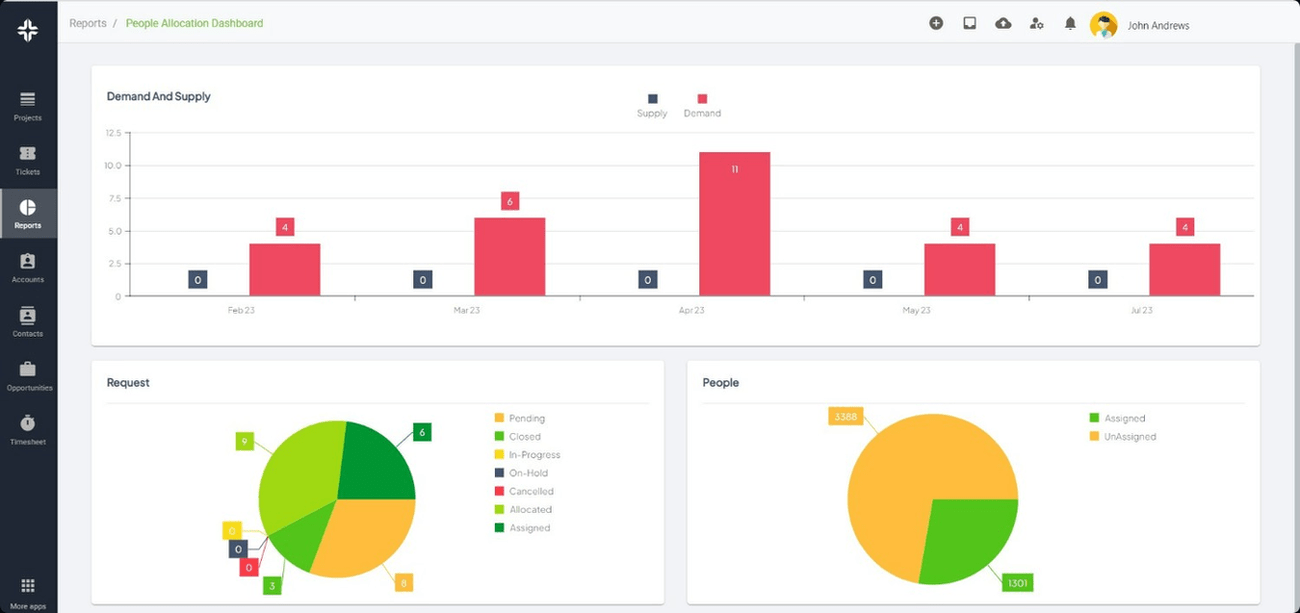
What is Forecast Revision Rate?
Forecast Revision Rate (FRR) is a metric that quantifies the frequency and magnitude of changes made to a forecast over a specific period.
In the context of Professional Service Automation (PSA), it measures the volatility and accuracy of project or resource forecasts, helping businesses understand how often and why their predictions deviate from actual outcomes.
Importance of Forecast Revision Rate
In the dynamic world of professional services, accurate forecasting is paramount. The FRR serves as a barometer for the reliability of a company’s forecasting processes. A high FRR might indicate frequent changes, suggesting potential inefficiencies or lack of clarity in the forecasting process. Conversely, a low FRR can signify stability but might also mean that forecasts are not being updated as they should be. Accurate forecasting is crucial for several reasons:
1. Resource Allocation: Ensuring that resources are allocated efficiently is vital for optimizing project financials.
2. Client Satisfaction: Meeting project deadlines and expectations hinges on accurate forecasting.
3. Financial Planning: Accurate forecasts are essential for financial management in PSA, ensuring profitability and sustainability.

Importance of Forecast Revision Rate
Calculating Forecast Revision Rate
Formula:
Forecast Revision Rate (FRR) = Number of Forecast Revisions / Total Forecasting Periods × 100
Example:
Suppose a company made 5 forecast revisions over 20 forecasting periods. Using the formula:
FRR=520×100=25%
This means that 25% of the time, the company revised its forecasts.
Forecast Revision Rate vs Other Metrics
While FRR is a valuable metric, it’s essential to understand how it differs from other related metrics:
1. FRR vs Forecast Accuracy: While FRR measures the frequency of forecast changes, forecast accuracy quantifies how close the forecasted values are to the actual outcomes.
2. FRR vs Forecast Bias: Bias measures the tendency of the forecasts to consistently over or underestimate the actual outcomes. A high FRR might indicate frequent adjustments to correct such biases.
By integrating tools like project management software, businesses can gain insights into these metrics and more, ensuring a holistic view of their forecasting processes.
| Metric | Description | Key Difference from Forecast Revision Rate |
|---|---|---|
| Forecast Revision Rate | Measures how often forecasts are revised or updated. It reflects the frequency of changes made to forecasts in a given period. | Focuses specifically on the revision frequency in forecasting. |
| Forecast Accuracy | Measures the degree of accuracy of the forecasted values when compared to actual outcomes. It assesses the correctness of predictions. | Assesses the quality of the forecast in terms of correctness rather than revision frequency. |
| Forecast Bias | Evaluates the systematic overestimation or underestimation of forecasts. It indicates whether forecasts tend to be consistently too high or too low. | Addresses the direction and magnitude of forecast errors, but not the revision frequency. |
| Mean Absolute Error (MAE) | Quantifies the average absolute difference between forecasted values and actual results. It provides a straightforward measure of forecast accuracy. | Measures forecast accuracy but doesn’t consider how often revisions occur. |
Application of Forecast Revision Rate
FRR is not just a metric; it’s a tool for continuous improvement:
1. Resource Management: By understanding the reasons behind frequent forecast revisions, businesses can streamline their resource management processes.
2. Client Communication: Keeping clients informed about project changes is easier when you have a grasp on your FRR. This transparency can enhance client relationships.
3. Strategic Decision Making: A high FRR might indicate a need for better data or tools. Leveraging PSA software can provide the necessary insights for informed decisions.
Ready to Optimize Your Forecast Revision Rate?
KEBS, a leading PSA software, offers tools that can help businesses optimize their FRR. With KEBS real-time reporting analytics, businesses can quickly identify patterns and anomalies in their forecasts.
The platform promotes collaborative project management, ensuring that forecasts are based on collective insights.

KEBS Resource Management
Ready to optimize your Forecast Revision Rate? Contact KEBS or request a demo to see how their platform can transform your forecasting processes.



